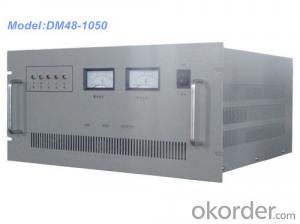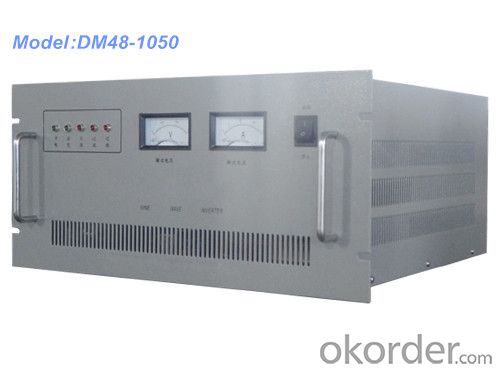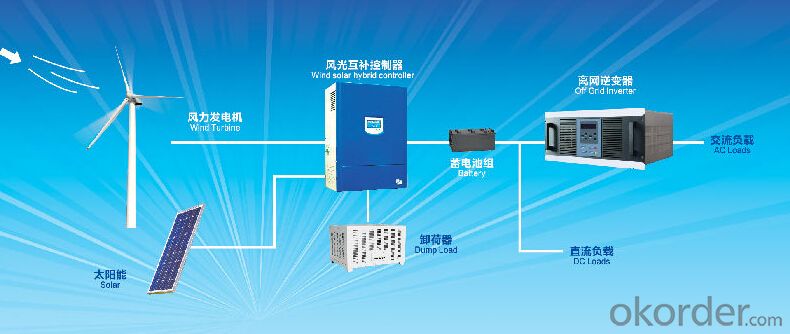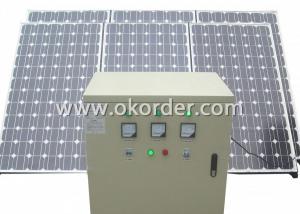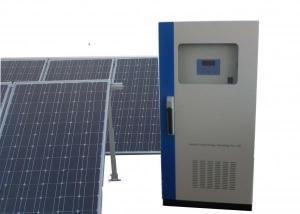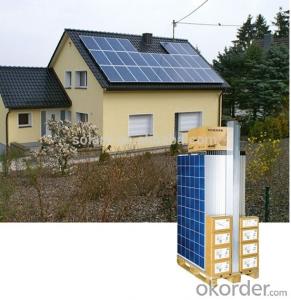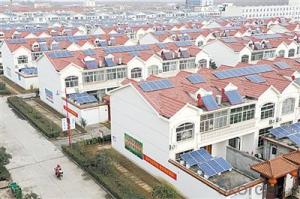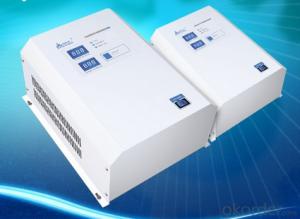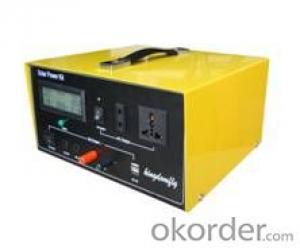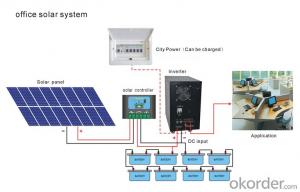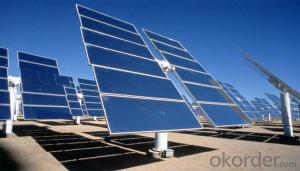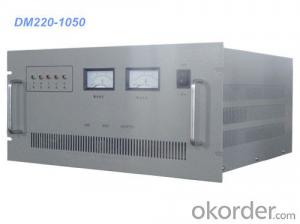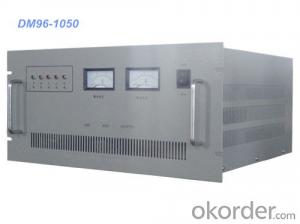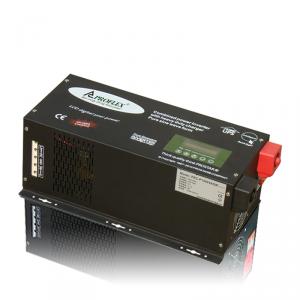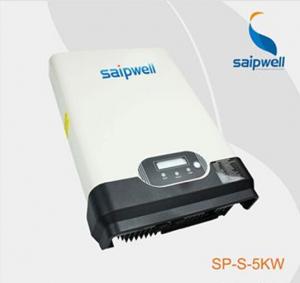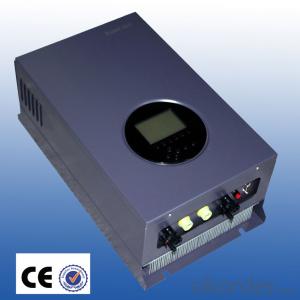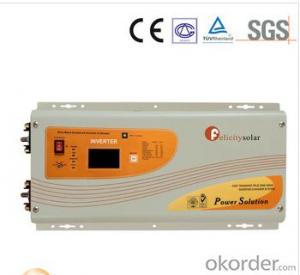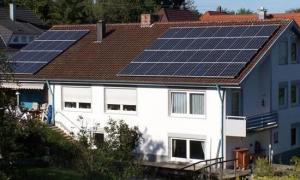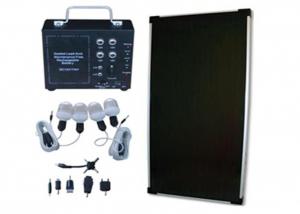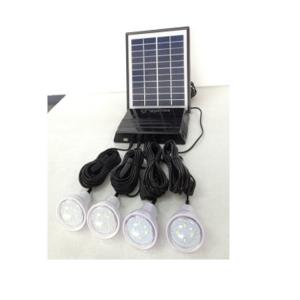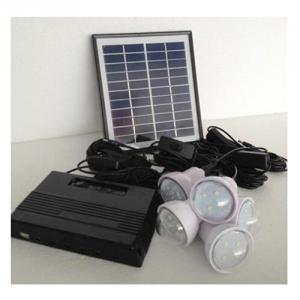Arinna Solar Energy Systems Pure Sine Wave Inverter/DC AC Inverter 5KVA 48V with Isolate Transformer
- Loading Port:
- Qingdao
- Payment Terms:
- TT or LC
- Min Order Qty:
- 1 unit
- Supply Capability:
- 800 unit/month
OKorder Service Pledge
OKorder Financial Service
You Might Also Like
Specifications
1.using IGBT from Mitsubishi company
2.using American ATEMEL company microprocessor
3.Max. Efficiency>94%
Features:
1. using IGBT from Mitsubishi company as the power components
2. using American ATEMEL company microprocessor as figure controller
3. perfect protection and warning functions
4. circuit frame compact,Max. Efficiency≥94%
5. with wide input voltage range
Off Grid Pure Sine Wave Inverter 5KW 48V for wind power and PV power with factory price
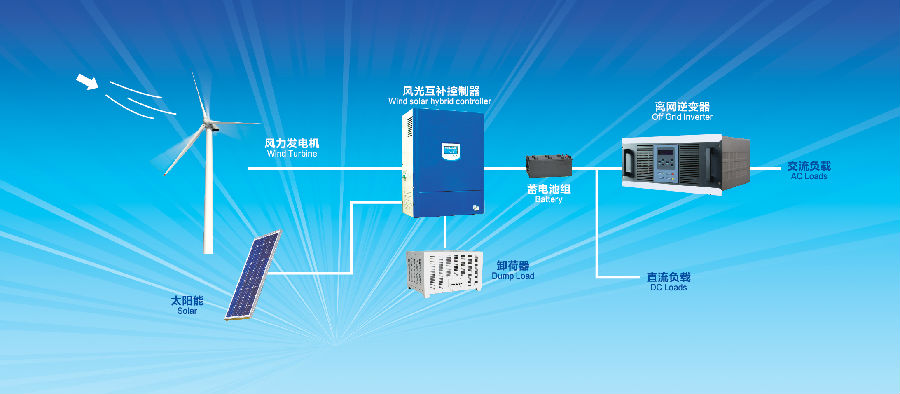
Technical Data Sheet
Type | ND48-5KD | ||||
DC input | Input rated voltage | 48 VDC | |||
Input rated current | 119 A | ||||
Input DC voltage range | 40-60 Vdc | ||||
AC input | Allow input voltage range | 110 VAC / 120 VAC / 220 VAC / 240 VAC ± 15% | |||
Input rated current | 45.5A / 41.7A / 22.5 A / 21A | ||||
Bypass transfer time | ≦4 ms | ||||
AC output | Rated capacity | 5KVA | |||
Output rated power | 4KW | ||||
Output rated voltage and frequency | 110 VAC / 120 VAC / 220 VAC / 240 VAC,50Hz / 60Hz | ||||
Output rated current | 45.5A / 41.7A / 22.5 A / 21A | ||||
Output voltage accuracy | 110 VAC / 120 VAC / 220 VAC / 240 VAC± 2% | ||||
Output frequency accuracy | 50Hz / 60Hz ± 0.05% | ||||
Waveform distortion (THD). | ≤3% | ||||
Dynamic response time | 5% | ||||
Power factor (PF) | 0.8 | ||||
Overload capacity | 120%,3minutes,150%,10second | ||||
Crest factor (CF) | 3:1 | ||||
Inverter efficiency | 90% | ||||
Working Environment | Dielectric strength | 1500VAC,1minute | |||
Noise (1m) | ≤50dB | ||||
Ambient temperature | -10℃~+50℃ | ||||
Humidity | 0~90%,No condensation | ||||
Altitude | ≤5000 m | ||||
Industrial Frequency Transformer | Yes | ||||
Production function | Input reverse protection, input under-voltage protection, output overload protection, output short circuit protection, thermal protection | ||||
Dimensions | 482*420*223mm | ||||
Weight | 52kg | ||||
FAQ
Q1:Can we visit your factory?
A1:Sure,welcome at any time,seeing is believing.
Q2:Which payment terms can you accept?
A2:T/T,L/C,Moneygram,Paypal are available for us.
- Q: Can solar energy systems be used in areas with limited construction materials?
- Yes, solar energy systems can be used in areas with limited construction materials. Solar energy systems can be designed to be simple and require minimal construction materials. For example, small-scale solar systems like solar panels or solar lanterns can be easily installed and used in remote areas with limited resources. Additionally, innovative solutions like solar cookers or solar water heaters can also be implemented in areas with limited construction materials, providing clean and sustainable energy alternatives.
- Q: Can solar energy systems be used in indoor farming or greenhouse applications?
- Yes, solar energy systems can be used in indoor farming or greenhouse applications. Solar panels can be installed on the roofs or walls of greenhouses to capture sunlight and convert it into electricity, which can power various aspects of indoor farming operations such as lighting, irrigation systems, and ventilation. This not only reduces the reliance on traditional energy sources but also provides a sustainable and cost-effective solution for indoor farming.
- Q: Can solar energy systems be used in areas prone to earthquakes?
- Yes, solar energy systems can be used in areas prone to earthquakes. Solar panels are designed to withstand various weather conditions, including seismic activity. However, additional precautions may be required during the installation process to ensure the stability and safety of the system in earthquake-prone areas.
- Q: What are the key components of a solar energy system?
- The key components of a solar energy system include solar panels, an inverter, a mounting system, batteries (optional), and a monitoring system.
- Q: Can solar energy systems be installed in areas with heavy snowfall?
- Yes, solar energy systems can be installed in areas with heavy snowfall. However, it is important to consider the impact of snow on the system's performance and take necessary precautions during installation. Snow can temporarily reduce the amount of sunlight reaching the solar panels, which in turn reduces their energy production. However, the panels are designed to have a tilt and smooth surface, allowing snow to slide off easily. Additionally, advancements in technology have led to the development of snow-resistant solar panels that are more effective at converting sunlight into electricity even in snowy conditions. It is also worth noting that solar panels are often mounted at an angle to maximize their exposure to the sun, which helps to minimize snow accumulation. Overall, while heavy snowfall may impact the efficiency of solar energy systems, they can still be successfully installed and can contribute to renewable energy generation in areas with such climatic conditions.
- Q: Can solar energy systems be used in areas with limited access to solar energy training programs?
- Yes, solar energy systems can be used in areas with limited access to solar energy training programs. While training programs can be beneficial in helping individuals understand how to design, install, and maintain solar energy systems, there are various resources available that can still enable people to harness solar energy even without formal training. Online resources, books, and manuals can provide valuable information on solar energy systems, and local experts or organizations can offer guidance and support. Additionally, some solar energy companies may offer on-the-job training or apprenticeship programs to help individuals acquire the necessary skills. Ultimately, with determination and resourcefulness, individuals in areas with limited access to training programs can still utilize solar energy systems effectively.
- Q: Are there any noise or vibration issues with solar energy systems?
- Solar energy systems may experience noise and vibration issues, albeit to a lesser extent compared to other energy generation methods. While solar panels themselves are silent and vibration-free during the process of converting sunlight into electricity, certain components like inverters or mounting structures may emit a faint hum or vibration. The extent of this depends on the system's quality and design. Moreover, if solar panels are placed on rooftops or in close proximity to living areas, there could be some audible noise or vibrations transmitted through the building structure. Nevertheless, these concerns are generally deemed insignificant and are often overshadowed by the environmental and economic advantages of solar energy.
- Q: Can solar energy systems be used in areas with limited access to technical expertise?
- Yes, solar energy systems can be used in areas with limited access to technical expertise. Solar energy systems are increasingly designed to be user-friendly and require minimal technical expertise for installation and maintenance. Additionally, training programs and educational resources are available to help individuals in these areas learn how to install and maintain solar energy systems effectively.
- Q: How do solar energy systems impact the transportation sector?
- Solar energy systems impact the transportation sector by providing a renewable source of power for electric vehicles (EVs) and public transportation. Solar-powered charging stations and infrastructure reduce the dependence on fossil fuels, decrease greenhouse gas emissions, and promote sustainable transportation options. Additionally, solar energy can also be used to power auxiliary systems in vehicles, making them more energy-efficient and reducing their carbon footprint.
- Q: How long does it take for a solar energy system to pay for itself?
- The payback period for a solar energy system varies based on several factors such as the initial cost, location, energy usage, and available incentives. On average, it takes around 5-10 years for a residential solar energy system to pay for itself through energy savings. However, this timeframe can be shorter in areas with high electricity costs and substantial government or utility incentives.
Send your message to us
Arinna Solar Energy Systems Pure Sine Wave Inverter/DC AC Inverter 5KVA 48V with Isolate Transformer
- Loading Port:
- Qingdao
- Payment Terms:
- TT or LC
- Min Order Qty:
- 1 unit
- Supply Capability:
- 800 unit/month
OKorder Service Pledge
OKorder Financial Service
Similar products
Hot products
Hot Searches
Related keywords
